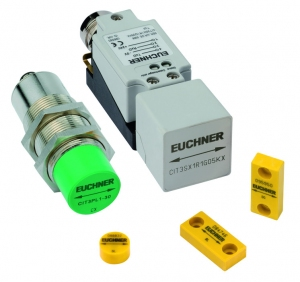Identification Systems
Inductive Identification Systems are used for the non-contact identification of products such as tools, product carriers or containers in the entire manufacturing and logistics sector. The data carriers for the Identification Systems CIS are mostly programmed with a unique sequential number. The product is identified at a read station using this number and the related production data are then assigned to the product.
The data carriers are read using a completely wear-free inductive coupling. The read heads and data carriers are of robust design, have a high degree of protection and are designed for harsh industrial usage. The Identification System will also work without problems when subject to dirt and moisture.

System overview and function
The Identification System CIS essentially comprises the following components:
- Data carrier
- Read-only station or read/write station with data interface
The Identification Systems CIS3, CIS3A and CIS3A-Mini are very similar with regard to the interfaces to the higher level control system. As a result the integration into the control system is similar. There are differences, on the one hand, in the design of the antenna and, on the other hand, in the design of the components. The special features and advantages of the individual systems as well as the related system components are divided into separate sections for the systems CIS3, CIS3A and CIS3A-Mini. The components for the different Identification Systems CIS3, CIS3A and CIS3A-Mini must not be mixed between the systems, i. e. a CIS3 read head is not suitable for reading a CIS3A data carrier.
The read stations and read/write stations for the CIS3 and CIS3A are fitted compactly in one housing. In the case of the CIS3A-Mini the stations are split in two for space reasons, that is interface adapter and antenna are connected via an antenna cable.
Power is supplied to the transponder and the data are transferred contactlessly between the read/write station and the data carrier.
The CIS Identification System operates on the principle of inductive coupling in the near field, based on a carrier frequency of 125 kHz. This standard frequency at the low end of the frequency band used for RFID applications makes it possible, if necessary, to even install the data carrier flush in metal. However, it will certainly be of advantage if a non-metallic material is used in the immediate area around the data carrier.
A memory chip and an antenna are fitted in the data carrier, in various shapes (transponder). The E2PROM to which data can be written (programmable) retains the data in non-volatile form. For all standard data carriers used for CIS the following applies:
- Transponder without battery
- Robust encapsulated data carrier housing with degree of protection IP67
